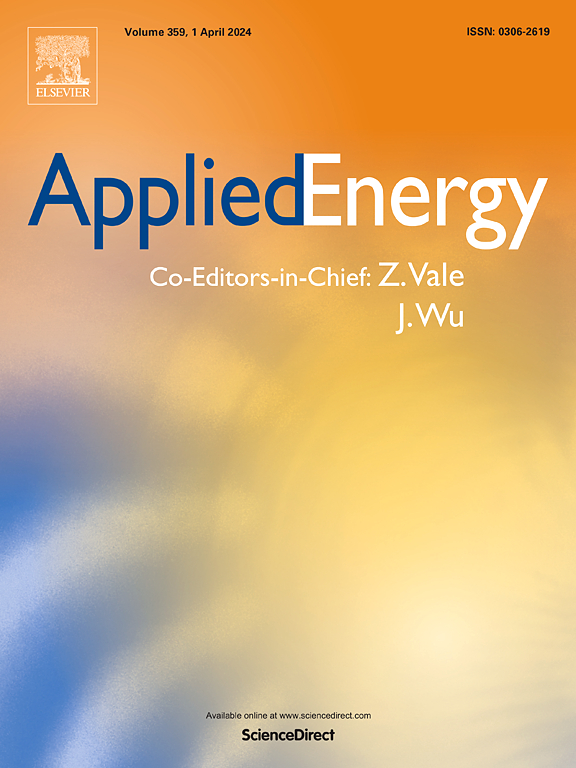基于三重底线方法的可持续食物垃圾转化为生物能源的供应链
IF 11
1区 工程技术
Q1 ENERGY & FUELS
引用次数: 0
摘要
全球对食物垃圾管理和可持续能源生产的日益关注推动了对高效食物垃圾转化为生物能源供应链的需求。然而,实现经济可行性与环境可持续性和社会效益仍然具有挑战性。本研究提出了一个基于三重底线方法的多目标优化框架的食物垃圾转化为生物能源的供应链优化模型。该模型采用了基于激励的食物垃圾收集政策,提高了食物垃圾的回收率,减少了对二次原料的依赖。本文分析了食物垃圾可得性对供应链可持续性的影响,并利用生命周期评估方法评估了食物垃圾转化为生物能源供应链的环境和社会影响。采用多目标粒子群优化技术对多目标混合整数线性规划问题进行了优化。数值结果表明,在最优获取成本为3.4美元的情况下,实施激励机制可使食品浪费回报率提高96.7 %,显著实现了社会影响最大化,同时使环境影响和整体供应链成本最小化。然而,采购二次原料降低了供应链风险并维持了生物能源生产,但增加了总成本、环境和社会影响,分别增加了17.12 %、3.92 %和16.67 %。基于pareto的权衡分析证明了多目标优化模型在平衡目标方面的灵活性。研究结果为决策者和行业将可持续食物垃圾管理与生物能源生产相结合提供了战略见解,为提高食物垃圾转化为能源部门的可持续性和效率提供了全面的决策支持框架。本文章由计算机程序翻译,如有差异,请以英文原文为准。
Sustainable food waste-to-bioenergy supply chain with rate of return under triple bottom line approach
The increasing global concern over food waste management and sustainable energy production has driven the need for an efficient food waste-to-bioenergy supply chain. However, achieving economic viability with environmental sustainability and social benefits remains challenging. The study proposes an optimized food waste to bioenergy supply chain model that integrates a multi-objective optimization framework based on the triple bottom line approach. The model incorporates an incentive-based food waste collection policy, enhancing the rate of return of food waste and reducing dependence on secondary feedstock. The effect of food waste availability on supply chain sustainability is analyzed under several scenarios, and the environmental and social impact of the food waste-to-bioenergy supply chain is assessed using a life cycle assessment approach. The multi-objective mixed integer linear programming problem is optimized using the multi-objective particle swarm optimization technique. Numerical results indicate that implementing an incentive mechanism, with the optimal acquisition cost of $3.4, increases the rate of return on food waste by 96.7 %, significantly maximizing the social impact while minimizing environmental impact and overall supply chain cost. However, procuring secondary feedstock mitigates supply chain risk and maintains bioenergy production but increases total cost, environmental, and social impact by 17.12 %, 3.92 %, and 16.67 %, respectively. The Pareto-based trade-off analysis demonstrates the flexibility of the multi-objective optimization model in balancing objectives. The findings offer strategic insights for policymakers and industries to integrate sustainable food waste management with bioenergy production, offering a comprehensive decision-support framework for enhancing sustainability and efficiency in the food waste-to-energy sector.
求助全文
通过发布文献求助,成功后即可免费获取论文全文。
去求助
来源期刊

Applied Energy
工程技术-工程:化工
CiteScore
21.20
自引率
10.70%
发文量
1830
审稿时长
41 days
期刊介绍:
Applied Energy serves as a platform for sharing innovations, research, development, and demonstrations in energy conversion, conservation, and sustainable energy systems. The journal covers topics such as optimal energy resource use, environmental pollutant mitigation, and energy process analysis. It welcomes original papers, review articles, technical notes, and letters to the editor. Authors are encouraged to submit manuscripts that bridge the gap between research, development, and implementation. The journal addresses a wide spectrum of topics, including fossil and renewable energy technologies, energy economics, and environmental impacts. Applied Energy also explores modeling and forecasting, conservation strategies, and the social and economic implications of energy policies, including climate change mitigation. It is complemented by the open-access journal Advances in Applied Energy.
 求助内容:
求助内容: 应助结果提醒方式:
应助结果提醒方式:


